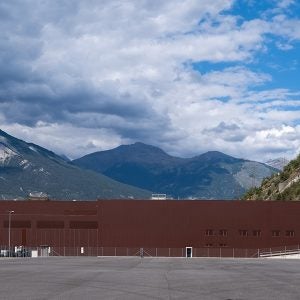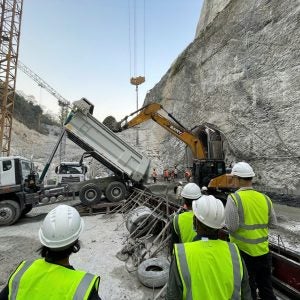A US Department of Energy (DOE) sponsored project will see Pacific Northwest National Laboratory (PNNL) and Oak Ridge National Laboratory (ORNL) work together to develop a virtual, open-access platform that creates a digital representation of hydroelectric plants using virtual and real-time data and feedback to optimize operations.
The Digital Twins for Hydropower framework platform – which is sponsored by the DOE’s Water Power Technologies Office – will serve as a place for the hydropower industry to evaluate and replace mechanical components, accelerate technology development, and improve hydropower operations and performance. These improvements would help reduce service downtime and shutdowns, which interfere with delivering electricity to the grid.
“The goal here is for hydropower to remain an efficient, affordable resource to own and operate, and to address the ever-increasing demand of providing grid resiliency,” said Osman Ahmed, a PNNL mechanical engineer and advisor leading the Digital Twins project.
In this first year of the project, PNNL is designing an open platform framework of a Digital Twin needed to modernize the hydropower fleet. The PNNL team is engaging with owners, operators, utility companies, and technology providers in the hydropower industry to get their feedback and incorporate the elements and components that should be included in the platform. For example, industry stakeholders are weighing in on what elements in the platform would help a hydroelectric dam perform more efficiently, flexibly, and affordably.
PNNL has already discussed with five different hydroelectric plant owners and they all have communicated that they want tools to help improve the facility performance.
“What we’re hearing is that the industry needs a multifaceted design that accounts for operations, predictions of failure, how to avoid downtime, and scenario planning with the different complexities,” Ahmed said. “If you create a good Digital Twin, they can all learn from each other.”
ORNL will use its capabilities in modelling and simulation to develop the prototype of the platform to demonstrate to the hydropower industry how it works. The platform is expected to be built next year and should be customizable for users within the next three to four years. Users will be able to pick and choose à la carte mechanical components to add to or change their plant.
In the long-term, the platform is expected to create a library of hydropower plants across the US fleet so that users can adapt their plant based on others they’ve seen work effectively.

Composite image by Chris DeGraff | Pacific Northwest National Laboratory






